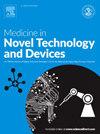糖尿病病理图像分析:通过升级的resnet50框架进行精确分类
Q3 Medicine
引用次数: 0
摘要
糖尿病是一个日益严重的全球健康问题,需要有效的诊断工具来支持早期发现。本研究提出了一种增强的深度学习框架SE-ResNet50,该框架将挤压和激发(SE)块集成到传统的ResNet50架构中,以改进肾小球图像对糖尿病肾脏病理的分类。SE块自适应地重新校准特征响应,使模型能够更好地强调诊断相关结构。该框架在金泽医科大学的肾脏组织数据集上进行了训练和验证,取得了97.02%的准确率、0.96的精密度和0.9856的AUC的优异性能。与现有的CNN架构(如EfficientNet B0、Inception V3和ConvNeXt)相比,SE-ResNet50表现出优越的鲁棒性和通用性。通过Grad-CAM进一步可视化显示,该模型有效地定位了肾小球图像中的关键区域。这些结果突出了SE-ResNet50作为一种可靠且可解释的工具在临床环境中推进糖尿病相关CKD诊断的潜力。本文章由计算机程序翻译,如有差异,请以英文原文为准。
Image analysis of diabetes pathology: classifying with precision via an upgraded resnet50 framework
Diabetes is a growing global health issue, and effective diagnostic tools are needed to support early detection. This study proposes an enhanced deep learning framework, SE-ResNet50, which integrates a squeeze-and-excitation (SE) block into the conventional ResNet50 architecture to improve the classification of diabetic kidney pathology from glomerular images. The SE block adaptively recalibrates feature responses, enabling the model to emphasize diagnostically relevant structures better. The proposed framework was trained and validated on a kidney tissue dataset from Kanazawa Medical University, achieving superior performance with an accuracy of 97.02 %, precision of 0.96, and an AUC of 0.9856. SE-ResNet50 exhibited superior robustness and generalizability compared to established CNN architectures such as EfficientNet B0, Inception V3, and ConvNeXt. Further visualization via Grad-CAM revealed that the model effectively localizes critical regions within glomerular images. These results highlight the potential of SE-ResNet50 as a reliable and interpretable tool for advancing diabetes-related CKD diagnosis in clinical settings.
求助全文
通过发布文献求助,成功后即可免费获取论文全文。
去求助
来源期刊

Medicine in Novel Technology and Devices
Medicine-Medicine (miscellaneous)
CiteScore
3.00
自引率
0.00%
发文量
74
审稿时长
64 days
 求助内容:
求助内容: 应助结果提醒方式:
应助结果提醒方式:


